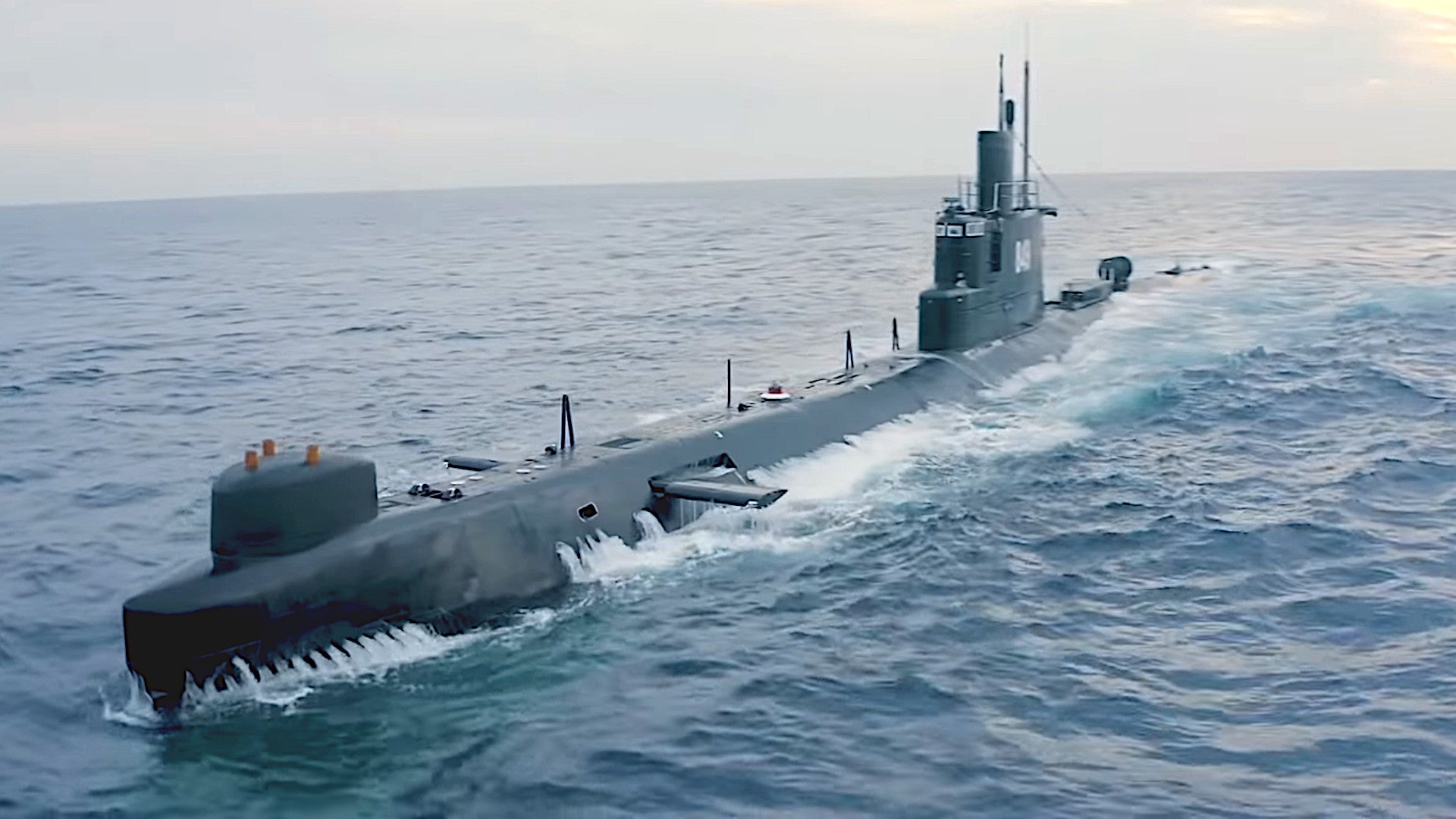The Egyptian Navy recently released a short, but very interesting video offering a close look at a recent training exercise in the Mediterranean, with a particular emphasis on one of the country’s four remaining Cold War vintage Romeo class diesel-electric attack submarines. Egypt is one of just two remaining operators of variants of this type, the other being North Korea, which revealed earlier this year that it was converting one of its examples into a new ballistic missile submarine, something you can read about in more detail in this past War Zone story. The remaining Egyptian examples, all of which originally came from China, are unique to the country, having gone through a major refit with U.S. assistance in the late 1980s and early 1990s that, among other things, allow them to fire UGM-84 Harpoon anti-ship missiles.
The Egyptian Ministry of Defense released the video on its official YouTube page on Dec. 11, 2019. The Romeo class submarine with the hull number 849 took part in the exercise, as well as one of the country’s much newer German-made Type 209/1400mod diesel-electric boats. The Gamal Abdel Nasser, one of the country’s two French-built Mistral class amphibious assault ships, which you can read about in much more detail here, was also present, with AH-64 Apache attack helicopters and CH-47 Chinook transports operating from its flight deck. At least two Gowind class corvettes, which Egypt also acquired from France, participated, as well.
Clips of the Romeo, inside and out, took up a significant portion of the video’s runtime. The interior shots offer something of an unusual view, showing a submarine filled with a mixture of archaic gauges, valve handwheels, and other features that underscore the age of the underlying design, coupled with much more modern radar screens, computers, and other improvements, some of which are also now more than 25 years old. It all being a product of Egypt’s somewhat curious history with these submarines.
The Soviet Union first began building Romeos, which displace around 1,830 tons submerged, in the 1950s as successors to the country’s first post-World War II submarines, which were derived from captured Nazi U-boat designs. Prior to the Sino-Soviet split, the Chinese received the requisite technical data package to begin building examples of their own, which they called Type 033s.

Between 1966 and 1969, Egypt acquired six Romeos from the Soviet Union. Between 1982 and 1984, the Egyptian Navy received another four Type 033s from China in a unique configuration known as the ES5A.
The ES5As replaced a number of Soviet-designed systems with more modern Chinese designs, including new sonars, communications equipment, and periscopes. There were also unspecified improvements that reduced their acoustic signature, something that is absolutely vital to reducing any submarine’s vulnerability to detection and attack.
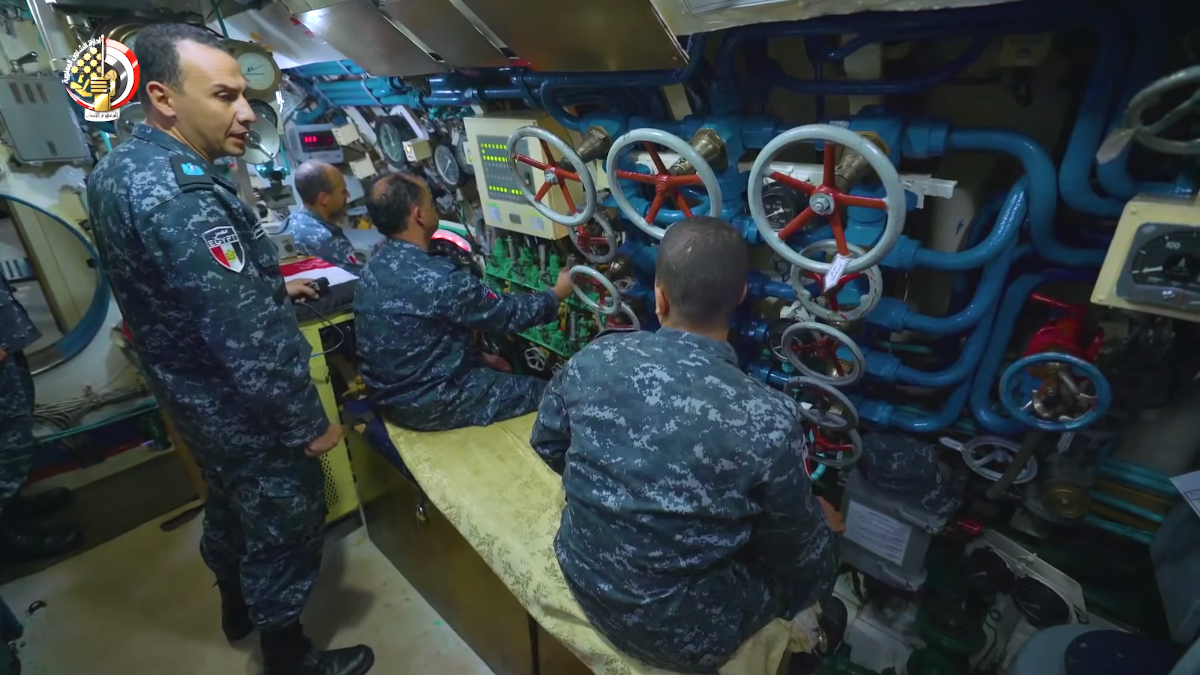
China further improved on this refit package to create the Type 033G variant for its own use, which also added computerized torpedo fire control systems and the ability to fire acoustic homing torpedoes from their six bow-mounted and two stern-mounted torpedo tubes. The Chinese subsequently offered Egypt a refit package in the mid-1980s to bring its fleet of Romeos and Type 033s up to a similar standard, known as the ES5B. Reportedly, the submarines in this updated configuration were 20 decibels quieter than the original Soviet design, a nearly 13 percent reduction in the boat’s acoustic signature. Their submerged top speed of 13 knots remained unchanged.
At the same time, Egypt’s relations with the United States had been steadily improving. In 1979, Egyptian President Anwar Sadat had agreed to a U.S.-brokered peace deal with Israeli Prime Minister Menachem Begin, which came into force the following year. Part of that deal was that the Egyptian government would get American economic and military aid, something that continues to this day.
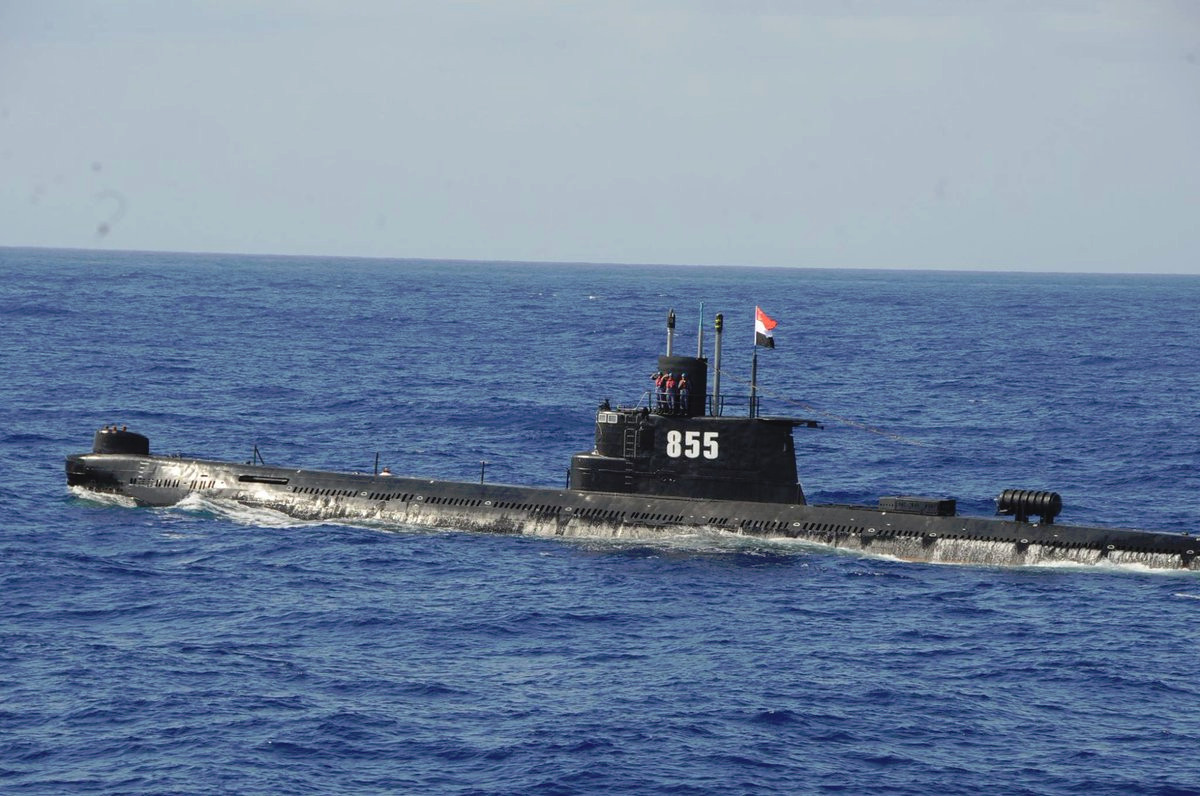
Though militants opposed to the deal, including members of the country’s military, succeeded in assassinating Sadat in 1981, the country’s government continued to uphold the deal and move forward in improving ties with the United States. One of the things Egyptian authorities asked for was U.S. assistance in further modernizing the country’s submarine capabilities.
So, in 1988, the State Department approved a plan wherein a company called Tacoma Boatyard in the Washington State city of the same name would further modernize the remaining submarines, according to one edition of the Naval Institute’s Combat Fleets. The refit was extensive, giving the boats the ability to fire torpedo-tube-launched UGM-84 Harpoon anti-ship cruise missiles and Mk 37 Mod 1 wire-guided torpedoes, according to one edition of Jane’s Fighting Ships. The recent video shows submarine 849 firing a Harpoon.
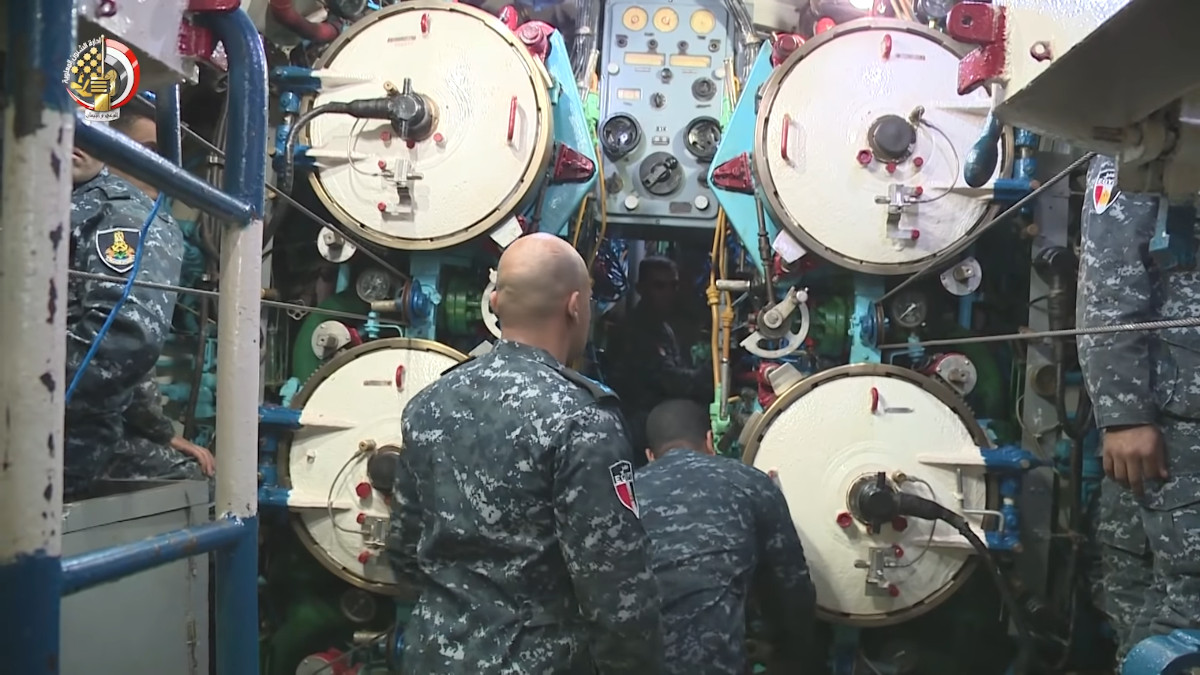
The boats also received new active and passive sonars from American defense contractor Loral and German firm Atlas Elektronik, respectively. Atlas Elektronik also supplied a new fire control system.
Refits to two of the original Soviet-supplied submarines and all four of the ones Egypt had acquired from Chinese were completed in 1993. The Egyptian Navy had decided to simply retire the other two Romeos it had received from the Soviets in the 1960s.
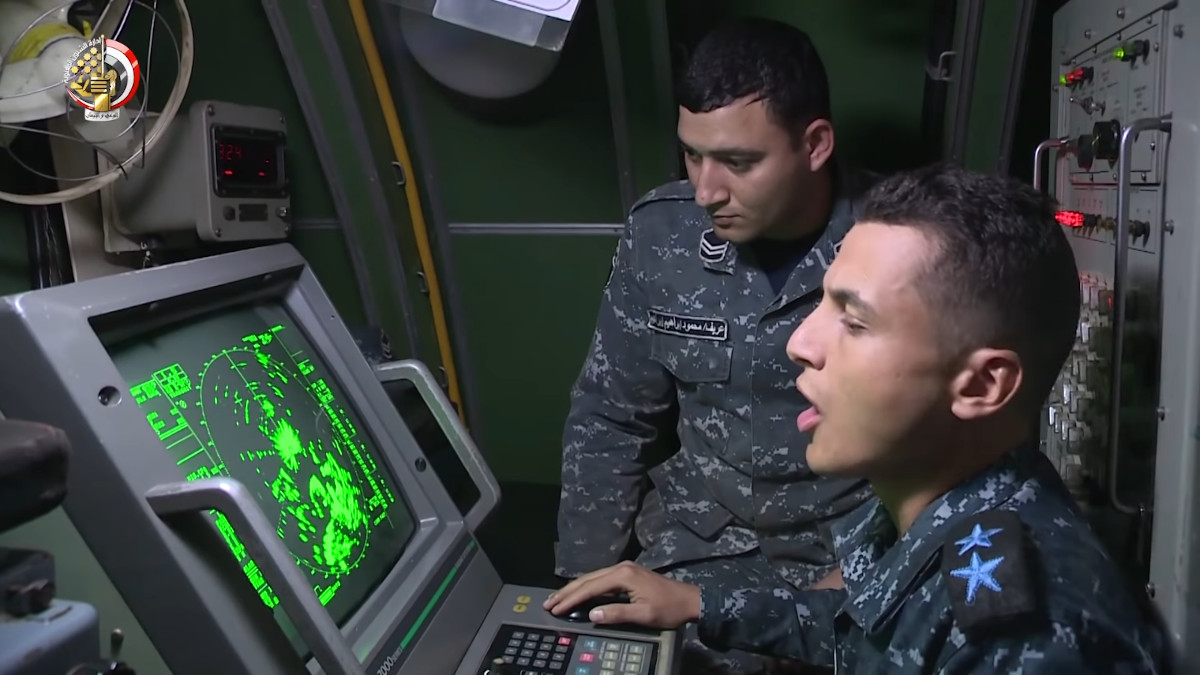
The Egyptians did not necessarily plan to still be operating the upgraded Romeos and Type 033s more than 25 years later. In the late 1980s, Egypt had also entered into a preliminary contract to buy the retired British Navy Porpoise class submarine HMS Walrus, as well as the first-in-class ex-HMS Oberon, both of which had originally entered service in the 1960s. That deal, which would also have included extensive refits, collapsed by the end of the decade. According to Jane’s Fighting Ships, and these two diesel-electric subs were scrapped in 1991.
In 1994, the U.S. State Department approved a convoluted plan wherein Egypt would buy German Type 209s, which American shipyard Huntington Ingalls would build under license in the United States using U.S.-made sonars and other internal systems. This would have allowed the Egyptians to purchase the submarines using American military aid via the Foreign Military Sales program, which includes stipulations about the percentage of work that must go to U.S.-based companies. That deal also fell through.
In 2011, Egypt finally concluded a deal with ThyssenKrupp Marine Systems directly to purchase two Type 209/1400mod class submarines, with an option to buy two more, which the country exercised in 2015. Egypt has now received two of these subs and ThyssenKrupp launched the third example in May of this year. The Egyptian Navy hopes to have received all four examples by the end of 2021.
It is likely at that point that they will replace the remaining four Type 033s that are still in service for good. Egypt has already retired the two other upgraded Soviet Romeos.

In the meantime, the Romeos, as is apparent from the Egyptian Ministry of Defense’s recent video, will remain an active part of the country’s naval capabilities, despite their increasing age. Especially with their ability to launch Harpoons, which provide the ability to conduct stand-off anti-ship attacks, they present at least some level of threat to more modern ships in service with potential opponents in the region.
The importance of Egypt’s Navy, which is largely a regional force primarily focused on protecting the country’s interests in the Mediterranean, the Red Sea, and surrounding littorals, may be getting some renewed attention amid a growing spat between Turkey and its maritime neighbors, among others, over resources rights. This was the result of a deal between Turkish authorities and Libya’s internationally recognized Government of National Accord earlier this year.
Egypt, as well as other countries in the Mediterranean, including Greece, Cyprus, and Israel, have rejected the arrangement, which they feel infringes on their rights. They also say it simply is invalid under international law. Relations between Turkey and Egypt, specifically, are already strained over the fact that the two countries are supporting opposing sides in Libya’s simmering civil war.
“Egypt, Israel, Greece, and Cyprus cannot carry out excavations in the Mediterranean without the permission of Turkey,” Turkish President Recep Tayyip Erdogan said of the deal, which Turkey and Libya finalized in November, in a recent interview with the Turkish TRT news network. ”We will protect our maritime borders in accordance with international agreements, thus protecting our rights and the rights of the Turkish part of Cyprus.”
Egypt’s naval exercises appeared to be signal to Turkish President Erdogan over those statements. Hopefully, the two countries will not actually come to blows, but if they do, the Egyptian Navy’s remaining unique and significantly upgraded Cold War-era Romeo class submarines remain ready to sortie out into the Mediterranean to defend the country’s interests, even as they approach the final years of their decades-long careers.
When these submarines finally do leave Egyptian service, North Korea will become the last operator of the type anywhere in the world.
Contact the author: joe@thedrive.com
